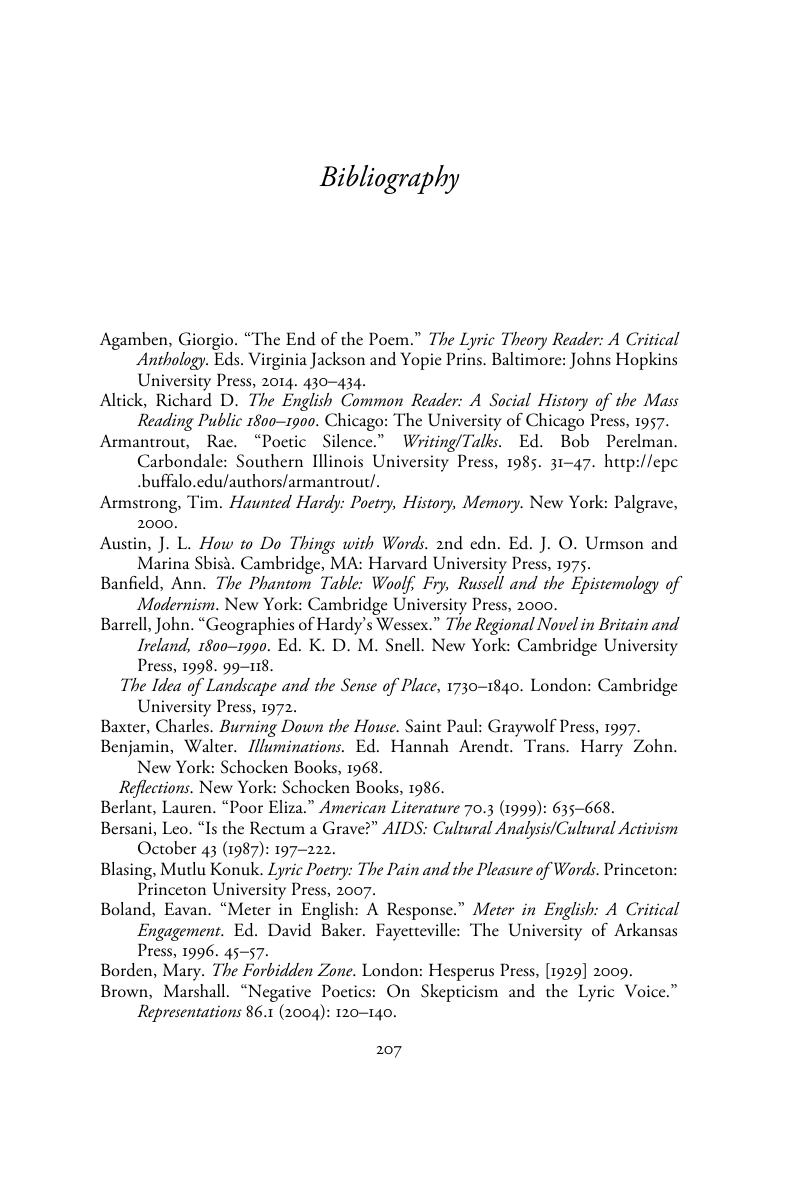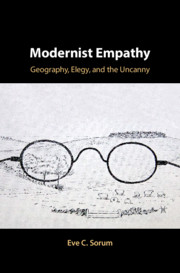Book contents
- Modernist Empathy
- Modernist Empathy
- Copyright page
- Dedication
- Contents
- Illustration
- Acknowledgments
- Chapter 1 Modernizing Empathy, Locating Loss
- Chapter 2 Disorientation, Elegy, and the Uncanny
- Chapter 3 Disorienting Empathy
- Chapter 4 Elegizing Empathy
- Chapter 5 Uncanny Empathy
- Conclusion Performing Empathy?
- Notes
- Bibliography
- Index
- References
Bibliography
Published online by Cambridge University Press: 11 June 2019
- Modernist Empathy
- Modernist Empathy
- Copyright page
- Dedication
- Contents
- Illustration
- Acknowledgments
- Chapter 1 Modernizing Empathy, Locating Loss
- Chapter 2 Disorientation, Elegy, and the Uncanny
- Chapter 3 Disorienting Empathy
- Chapter 4 Elegizing Empathy
- Chapter 5 Uncanny Empathy
- Conclusion Performing Empathy?
- Notes
- Bibliography
- Index
- References
Summary

- Type
- Chapter
- Information
- Modernist EmpathyGeography, Elegy, and the Uncanny, pp. 207 - 218Publisher: Cambridge University PressPrint publication year: 2019



